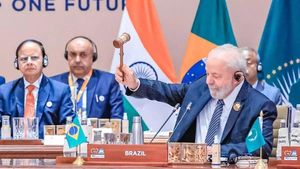The world watched closely as Donald Trump, known for his unconventional political style, began reshaping U.S. foreign policy and global trade practices. His presidency marked the start of what many termed the 'America First' policy, which altered longstanding alliances and trade agreements. This shift raised questions about the future of global trade and the U.S. role on the world stage, prompting various reactions from multiple countries around the globe.
During Trump's first years as president, his administration made significant changes to trade agreements, prioritizing bilateral deals over multilateral frameworks. One of the most notorious actions was the withdrawal from the Trans-Pacific Partnership (TPP), initially seen as a way to strengthen U.S. ties with countries across the Pacific Rim. The decision sent shockwaves through economies directly involved, particularly nations like Japan and Australia, who were part of the agreement.
Despite its controversial stance, the Trump administration did secure some victories on the trade front. The United States-Mexico-Canada Agreement (USMCA) replaced the 25-year-old North American Free Trade Agreement (NAFTA). This new agreement aimed to benefit American workers by increasing automobile manufacturing standards and protecting intellectual property, and it also introduced provisions for labor rights and environmental protection.
Meanwhile, Trump’s approach toward China was nothing short of aggressive, with tariffs imposed on billions of dollars worth of Chinese goods. The rationale was to combat what he deemed unfair trade practices and to bring jobs back to America. The trade war escalated, with both nations exchanging tariffs, which not only affected bilateral trade but also had rippling effects on the global economy. Many countries round the world began preparing for the potential ramifications of this trade conflict, uncertain of how it would impact their own economies.
Notably, Southeast Asian nations found themselves at the crossroads as they navigated these new trade dynamics. Singapore's Prime Minister Lawrence Wong voiced concerns about the rising unpredictability of international relations post-Trump, describing the current scenario as “a dangerous world in flux.” According to Wong, eroding multilateral institutions and norms have led to “growing zones of impunity,” where regional powers are emboldened. This precarious situation left many nations questioning their alliances and trade paths.
Wong emphasized the necessity for the U.S. to maintain its role as a guarantor of stability and trade, remarking, “We lean forward to support America’s deployment of its logistics, its rotational deployment of troops... but beyond security, we would like to see more American economic engagement.” His call for U.S. economic investment contrasted sharply with Trump’s focused lens on internal issues and minimal foreign involvement, potentially diminishing the U.S.'s influence in Southeast Asia.
Against this backdrop of uncertainty, countries like Vietnam were spotlighted. With nearly $100 billion trade surplus with the U.S., they were at risk of being caught between U.S. tariffs and China's growing dominance. Analysts speculated on how countries would adapt or realign their trade practices and partnerships, as they could benefit from investment and supply chains shifting away from China.
South Asian leaders were also pushing for stronger ties with the U.S., fearing isolation if they were not aligned under the Trump administration. The Philippines, traditionally one of the U.S.’s closest allies, had previously relied heavily on American support, but sentiment was shifting due to China’s increasing aggressiveness and influence. Jose Antonio Custodio, a military historian, noted this shift meant the Philippines would need to contribute more to the partnership. “If the Philippines has the same meek and submissive policy against China, then the Trump administration might not be too happy... if you’re an ally, you have to contribute,” he stated, summarizing the changed dynamics of regional diplomacy.
While countries scrambled to understand the long-term consequences of the Trump administration’s policies, others began to look toward cooperation instead of conflict. Nations were recognizing the necessity of diverse partnerships to mitigate risks, forming new coalitions outside traditional power structures. The changing global economic climate prompted these nations to rethink their strategies, fostering relationships with each other as well.
Emphasizing his vision for the U.S., Trump categorized multilateral agreements like the TPP as unfavorable, using his platform to advocate for direct negotiations with individual countries. This method was intended to secure what he claimed were more equitable arrangements and benefits for American workers. Nonetheless, it disrupted existing agreements and left many countries like Japan to seek assurance from alternative partnerships.
At the same time, tension between the U.S. and traditional allies grew, especially as Trump's hardline administration brought forth various tariffs. The increased tariffs put pressure on American companies reliant on imported goods, forcing many to rethink pricing structures and supply chains. Businesses had to adapt quickly to these changes, often resorting to raising prices or seeking other less expensive avenues for production.
Importantly, these changes had real repercussions for American consumers. With rising tariffs affecting the cost of goods from imported electronics to clothing, everyday citizens started feeling the pinch. The push for more domestic production was met with skepticism, questioning the practicality of reshoring jobs versus the costs involved.
Over time, conversations about U.S. foreign policy began shifting from purely security concerns to economic competition. A key component of the Trump administration's ideology was the idea of rival nations vying for power and influence, with the U.S. striving to maintain its dominant position. Whether through trade routes, military presence, or technological innovation, these competitive edges formed the crux of foreign policy discussions.
Community groups voiced their worries about job losses and rising costs, highlighting concerns over the sustainability of the current approach. The increased focus on bringing jobs back to America did not happen without its challenges, questioning the very fabric of supply chains established over decades. Some experts noted alternatives and modifications to these chains could be explored, but the disruption from changing policies led to more uncertainties.
While Trump's presidency invigorated supporters who felt globalism had failed them, it simultaneously raised alarms among critics fearing such unilateral actions would lead to isolationism. The delicate balance of international relationships was increasingly strained, with other nations doing their best to navigate the ever-changing diplomatic landscapes.
Trump's presidency left behind persistent questions about the U.S. role around the globe. Would other nations gravitate toward the hardline approaches of the new administration, or would they rather pursue diplomacy and mutual benefit? Regional leaders, especially those from smaller nations, pondered their next moves, seeking to protect their own interests without alienation.
Experts began advising cooperation over hostility, focusing on shared objectives rather than competition. The perception of American influence fluctuated throughout, prompting many nations to reconsider their roles on the world stage. The path forward remained uncertain, with leaders advocating for openness and reassessing strategies for alliance-building.
Intrinsic to Trump's foreign policy was the idea of retaining U.S. prominence. His administration's unconventional tactics often strained partnerships and allies. It underscored the need for adaptation, highlighted by nations previously reliant on the U.S. rethinking their strategies for the future.
Singapore's appeal to maintain economic and military relations with the U.S. epitomizes the complexity under Trump’s presidency. With everything on the line, countries sought stability amid global uncertainties, hoping for pragmatic engagement rather than drastic shifts. Wong's conclusion echoed the sentiment of many Southeast Asian leaders, emphasizing the shared responsibility of nation-states to cooperate and coexist even amid intense competition.
Trump's foreign policy legacy may not solely be defined by tariffs and global distances; rather, it might show the evolution of international relations where competition meets the necessity for collaboration. For countries around the world, the imperative so far has been to adapt, re-evaluate loyalties, and forge new economic paths under the shifting sands of geopolitical dynamics.



